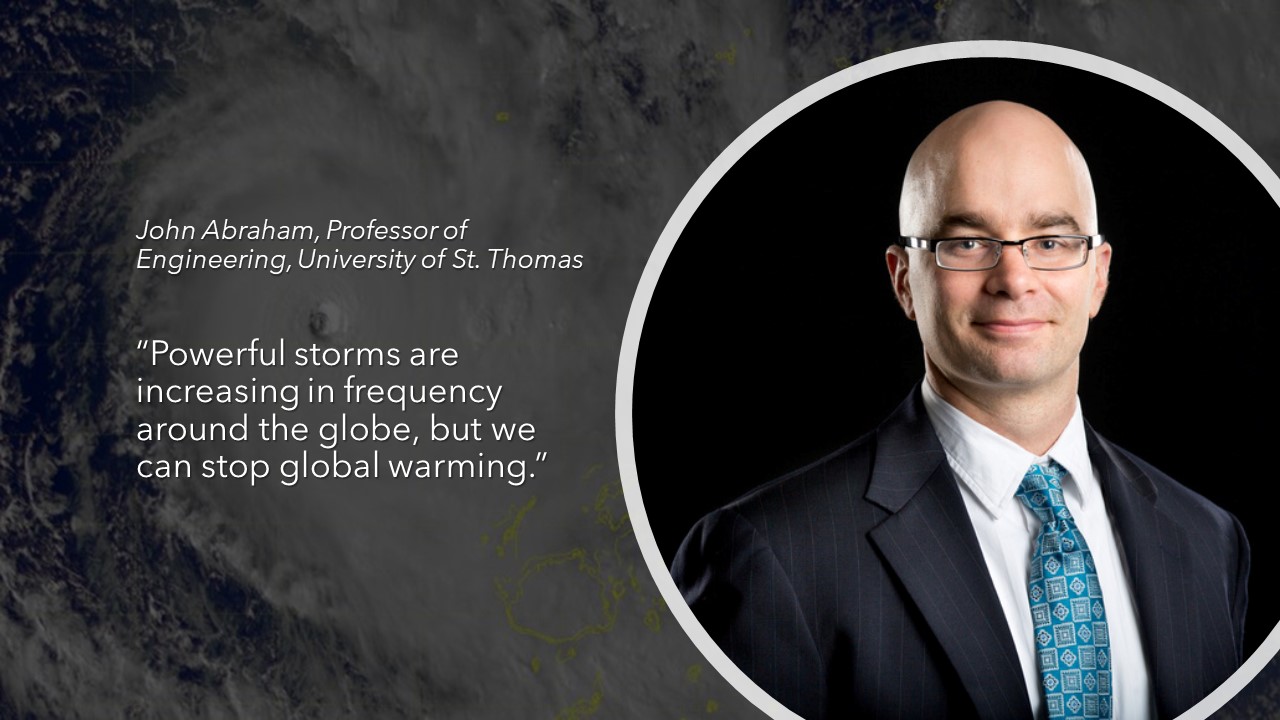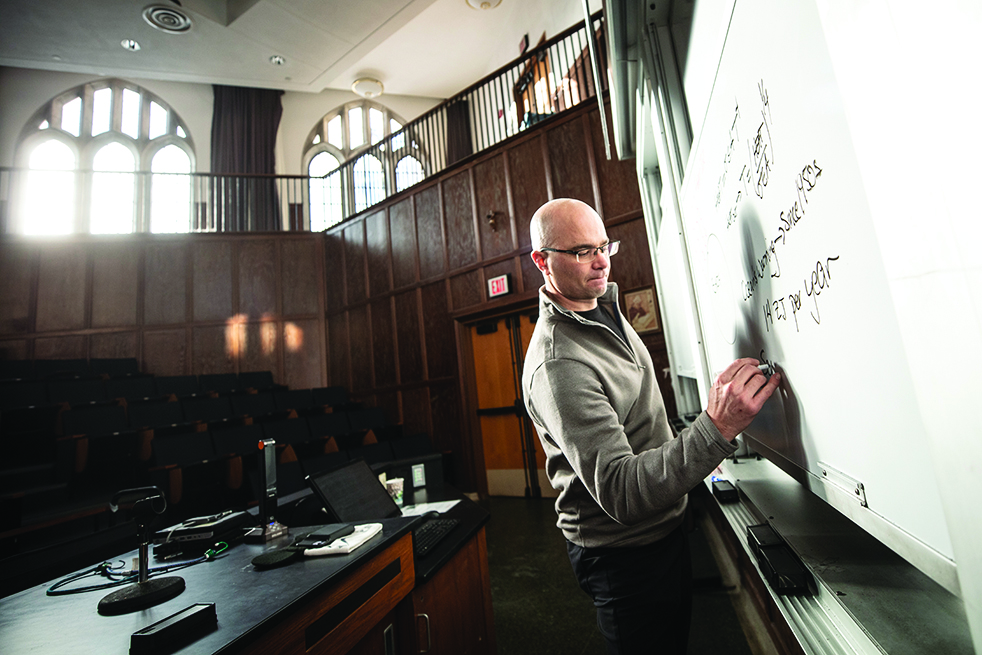You know climate change is real, said University of St. Thomas School of Engineering Professor John Abraham, when you see the intensity at which wildfires raged in Australia, across parts of the Amazon region, and even in the western United States during 2020. Extreme fires will become even more common in the future. And then there are the oceans. They are the ones to watch. They reached their hottest level ever last year, fanning the flames and fueling the storms.
“Warmer oceans make storms more powerful, particularly hurricanes and typhoons,” said Abraham, who was among 20 scientists from 13 institutes around the world to contribute to a new climate change study published Jan. 13 in Advances in Atmospheric Sciences.
“Powerful storms are increasing in frequency around the globe. Record numbers of typhoons made landfall in Vietnam after blasting the Philippines, and Fiji was devastated by a Category 5 hurricane in 2020,” Abraham said.
The integrating effect of the oceans makes the storms more powerful and disrupts rainfall patterns, which lead to floods, droughts and wildfires. And death.
“Climate change is literally killing people and we are not doing enough to stop it,” said Abraham, who hopes that the research he and his colleagues are tracking about record-setting warming of the oceans will bring enhanced focus to this global issue that he stressed has “profound effects on the environment and society.”
Why are the oceans so important? Because “more than 90% of global warming heat ends up in the oceans,” said Abraham. “When we think about ‘global warming,’ we really mean ‘ocean warming.’ And warmer oceans supercharge the weather, creating more powerful storms and continued sea level rise.”
Ocean heat is the best single indicator of whether the planet is warming or not, according to the study. In 2020, the upper 2,000 meters of the world’s oceans measured the highest temperatures since 1955. The oceans absorbed 20 zettajoules last year compared to 1 zettajoule of energy in 2019. This heat is equivalent to 630 billion hair blow-driers running day and night, every day for an entire year.
Using fewer hair driers is not exactly the answer, but our energy use is part of the solution, said Abraham. “We can do things individually, like buy more efficient vehicles or make our houses more efficient. We can also do things collectively, like develop national and international agreements to cut back on pollution,” he said.
“The fortunate thing is, we can stop global warming. And we can do it with today’s technology,” he said. “I am confident about clean energy. We know how to use energy more wisely, we are smart enough not to waste, and we are smart enough to buy more energy from wind and solar power. The costs have dropped so much that now you can buy electricity from the sun that is cheaper than dirty coal. Using clean energy can save our planet and money, at the same time.”
Read more about Abraham’s latest research in Science Magazine, as well as The Guardian. And a Tommie Experts Q&A with him in the Newsroom regarding his previous year’s research.







